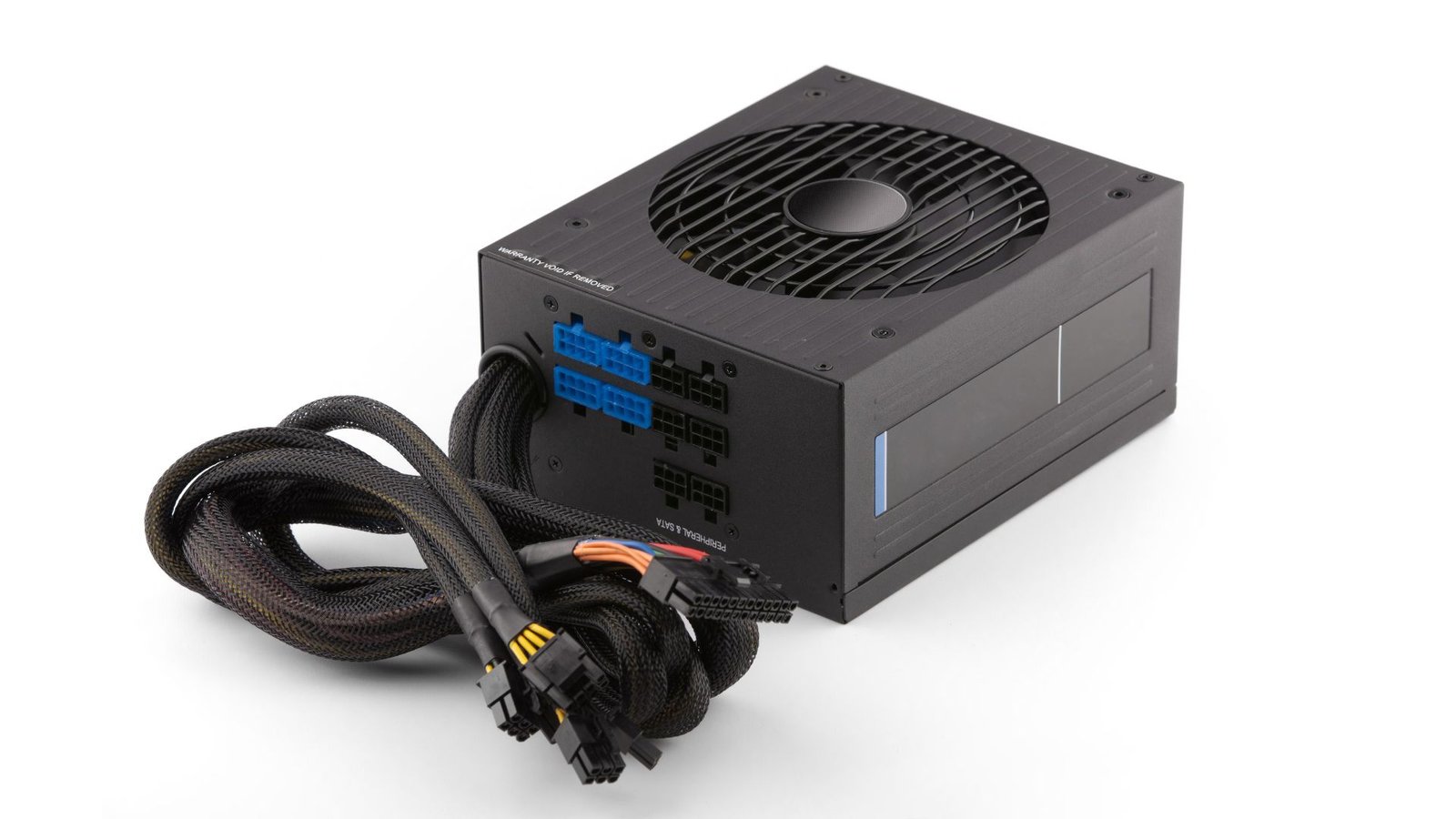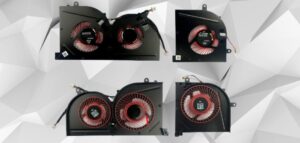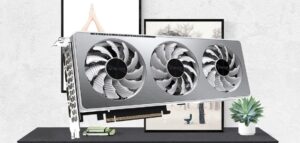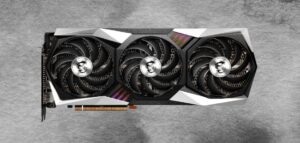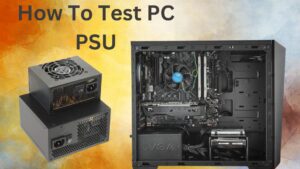PC Boots When PSU Is Turned On? Understanding PSU Behavior
Computers are intricate machines composed of numerous components working together seamlessly. However, users occasionally encounter puzzling occurrences, such as their PC boots when PSU is turned on. A PC that boots up as soon as the PSU (Power Supply Unit) is turned on, without pressing the power button, can be puzzling and concerning for many users. This behaviour is often unexpected and may indicate a configuration issue, a hardware malfunction, or a problem with the system’s power settings. While it may seem like a minor quirk, it’s important to address the issue promptly to avoid potential damage to your components or unexpected system behaviour.
There are several possible reasons for this phenomenon, ranging from BIOS/UEFI settings and faulty power switches to motherboard defects or incorrect wiring. Understanding the root cause is key to resolving the issue effectively. In this guide, we’ll explore the common causes behind a PC booting when the PSU is turned on and provide practical solutions to help you restore your system to normal operation while safeguarding your hardware.
What is a Power Supply Unit (PSU)?
The Power Supply Unit, often called PSU, is a critical component of any computer system. Its primary function is to convert alternating current (AC) from a power outlet into direct current (DC) required by the various components of the computer. The PSU supplies power to the motherboard, CPU, GPU, storage drives, and other peripherals, ensuring their proper functioning. Inside the PSU, several components work together, including transformers, capacitors, and voltage regulators, to regulate and distribute power to the computer components. It is typically housed in a metal casing to protect it from external factors and dissipate heat generated during operation.
How Does a PC Boot?
Booting a PC involves several sequential steps when the computer is powered on. Initially, pressing the power button signals the PSU to start providing power to the components. The motherboard then initiates the Power-On Self-Test (POST), which checks the hardware components for proper functioning. Once the POST is completed successfully, the BIOS or UEFI firmware is loaded, followed by the operating system, leading to the display of the login screen or desktop environment. During this boot process, the PSU plays a crucial role by supplying the necessary power to the components, enabling them to execute their functions effectively.
Common Causes of PC Booting When PSU Is Turned On:
1: BIOS or UEFI Settings:
- Modern motherboards allow users to configure power settings in the BIOS or UEFI firmware. If the “Restore on AC Power Loss” or “Power State After Power Failure” setting is enabled, the PC may boot automatically when power is restored to the PSU.
Solution:
1. Restart your PC and enter the BIOS/UEFI by pressing the designated key (e.g., DEL, F2, or ESC).
2. Navigate to the power settings menu.
3. Locate the “Restore on AC Power Loss” or similar settings.
4. Set it to “Power Off” or “Stay Off.”
5. Save your changes and exit the BIOS/UEFI.
2: Faulty Power Button or Wiring:
- A damaged power button or improperly connected wiring can cause your PC to start immediately when the PSU is powered. This is because the motherboard might interpret a constant signal from the power button as a request to turn on.
Solution:
1. Inspect the power button for physical damage or sticking.
2. Check the power button’s connection to the motherboard’s front panel header.
3. Test the system by temporarily disconnecting the power button and using a screwdriver to briefly short the power pins on the motherboard. If the problem is resolved, the power button may need to be replaced.
3: Motherboard Issues:
- A malfunctioning motherboard can sometimes send unintended signals to power on the system when the PSU is turned on. This might occur due to a short circuit, damaged components, or improper grounding.
Solution:
1. Inspect the motherboard for visible signs of damage, such as burnt components or swollen capacitors.
2. Ensure the motherboard is properly seated and secured in the case with standoffs.
3. If you suspect a hardware defect, consult a professional technician or consider replacing the motherboard.
4: Incorrect PSU Installation:
- If the PSU’s power cables are incorrectly connected to the motherboard or other components, it can lead to unintended behaviour, including immediate booting when the PSU is powered.
Solution:
1. Verify that the 24-pin ATX and 8-pin CPU power connectors are securely and correctly connected.
2. Ensure there are no loose or improperly seated connections.
5: Residual Electrical Charge:
- In rare cases, residual electrical charge in the system may cause the PC to boot unexpectedly when the PSU is powered on.
Solution:
1. Turn off the PSU and unplug the power cord.
2. Press and hold the power button on the PC for 10-15 seconds to discharge any residual power.
3. Reconnect the PSU and check if the issue persists.
6: Faulty PSU:
- A malfunctioning PSU can send unintended signals to the motherboard, causing it to boot the system as soon as power is supplied.
Solution:
1. Test the PSU using a PSU tester or swap it with a known working unit.
2. If the PSU is faulty, replace it with a reliable model from a reputable manufacturer.
Why Does a PC Boot When the PSU Is Turned On?
One common query among PC users is why their computer starts booting as soon as they flip the switch on the PSU. This behaviour is often attributed to the way modern motherboards are designed. When the PSU is turned on, a small amount of power is supplied to the motherboard, allowing it to maintain certain functionalities even when the computer is powered off. This includes features such as Wake-on-LAN and power management settings that enable the system to boot quickly when necessary. Additionally, some motherboards have a feature called “Power On by PCI-E” or similar, which allows specific peripherals like network cards or graphics cards to trigger the boot process when they receive power from the PSU.
How to Diagnose and Fix the Issue:
Step 1: Check BIOS/UEFI Settings:
- Access the BIOS/UEFI by pressing the appropriate key (e.g., Delete, F2, or Esc) during startup.
- Look for the “Restore on AC Power Loss” or similar settings under the Power Management section.
- Set this option to “Off” or “Stay Off.”
- Save the changes and restart your PC to see if the issue persists.
Step 2: Inspect the Power Switch:
- Turn off the PSU and disconnect your PC from power.
- Remove the front panel of your PC case to access the power switch.
- Check for signs of physical damage or dirt obstructing the switch.
- Test the switch by disconnecting its cable from the motherboard and shorting the power pins manually with a screwdriver to start the PC. If this resolves the issue, the switch may need replacement.
Step 3: Inspect the Motherboard:
- Perform a visual inspection of the motherboard for burnt components, swollen capacitors, or loose connections.
- Ensure that the front panel power connector is properly seated.
- If you suspect a fault, consider testing the motherboard with another PSU or seeking professional repair services.
Step 4: Verify PSU Installation:
- Confirm that all PSU cables, including the 24-pin motherboard connector and CPU power connector, are securely connected.
- Ensure that the PSU is properly mounted in the case and that no wires are pinched or damaged.
Step 5: Test with Another PSU:
- Disconnect the current PSU and replace it with a known working unit.
- Test the system to see if the issue persists. If the problem resolves, the original PSU is likely faulty and should be replaced.
Step 6: Consult a Technician:
- If none of the above steps resolve the issue, consult a professional technician.
- They can perform advanced diagnostics and repair tasks to address complex hardware faults or system issues.
Preventing Future Issues:
- Use High-Quality Components: Invest in a reliable PSU and high-quality cables to minimize electrical issues.
- Regular Maintenance: Clean your PC regularly to prevent dust buildup, which can cause overheating or shorts.
- Double-Check Connections: Ensure all cables and connectors are correctly installed, especially during new builds or upgrades.
- Update Firmware: Keep your motherboard’s BIOS/UEFI firmware updated to benefit from bug fixes and improvements.
Common Issues and Troubleshooting:
Despite the robust design of modern computer systems, users may encounter issues related to PC booting and PSU behaviour. Common problems include the computer failing to boot, unexpected shutdowns, or abnormal noises emanating from the PSU. Troubleshooting such issues requires a systematic approach, including checking connections, testing components, and monitoring system temperatures. If troubleshooting efforts fail to resolve the issue, seeking assistance from a qualified technician or contacting the manufacturer’s support service may be necessary to diagnose and fix the problem effectively.
Best Practices for Managing PSU Behavior:
To ensure optimal performance and longevity of your computer system, it is essential to implement best practices for managing PSU behaviour. This includes following proper shutdown procedures to prevent data loss or hardware damage, avoiding overloading the PSU with excessive power demands, and maintaining adequate ventilation to dissipate heat effectively. Regularly monitoring the health of the PSU using diagnostic tools and software can also help detect potential issues early on, allowing for timely intervention and preventive maintenance.
Pros:
- Quick system startup.
- Efficient power distribution.
- Enables hardware initialization.
- Facilitates BIOS/UEFI firmware operation.
- Essential for system reliability.
Cons:
- Dependency on PSU functionality.
- Potential for PSU-related failures.
- Risk of hardware damage if PSU malfunctions.
Conclusion
In conclusion, the phenomenon of a PC booting, when the PSU (Power Supply Unit) is turned on, is a normal and expected behaviour. This happens because the PSU supplies power to the entire computer system, including the motherboard and other components, as soon as it is switched on. The initial boot sequence, often indicated by fans spinning and lights coming on, occurs as the motherboard receives power and initializes its components. This process prepares the PC for subsequent operations, such as loading the operating system and launching applications. Therefore, experiencing a boot-up sequence immediately after turning on the PSU is a sign that the hardware components are receiving power and functioning correctly. It’s important to ensure that the PSU and all connected components are compatible and properly installed to maintain reliable operation and prevent any potential issues during startup.
FAQs: PC Boots When PSU Is Turned On
1. Why does my PC turn on when I switch on the PSU?
- Your PC may boot because the motherboard receives a small amount of power from the PSU, enabling quick startup.
2. How can I troubleshoot PSU-related booting issues?
- Check connections, test components, and monitor temperatures. Seek professional help if problems persist.
3. What are common signs of PSU failure?
- Common signs include unexpected shutdowns, abnormal noises, or failure to power on.
4. Can PSU overloading cause booting problems?
- Yes, overloading the PSU can lead to booting issues and potential hardware damage.
5. How do I maintain PSU health for optimal performance?
- Follow proper shutdown procedures, avoid overloading, and monitor PSU health regularly with diagnostic tools.
Last Updated on 26 January 2025 by Ansa Imran

Ansa Imran, a writer, excels in creating insightful content about technology and gaming. Her articles, known for their clarity and depth, help demystify complex tech topics for a broad audience. Ansa’s work showcases her passion for the latest tech trends and her ability to engage readers with informative, well-researched pieces.

